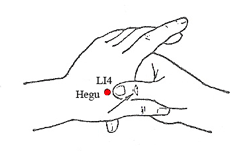Cervical mucus is a secretion of the columnar epithelium lining of the cervix, and the mucus changes in consistency and appearance during the menstrual cycle. The first few days, very little mucus is secreted. However, as ovulation approaches, yellowish or cloudy-white secretions are seen. During ovulation, it becomes clear, slippery, and elastic, and resembles the uncooked white of an egg. When the egg is released, progesterone causes cervical mucus to thicken and act as a barrier to other sperm, and more changes occur in cervical mucus during pregnancy.
Cervical Mucus Changes During Pregnancy
After Conception
What differentiates cervical mucus in non-pregnant and pregnant women are the consistency and color of the mucus. Cervical mucus after conception is white or clear, and is more slippery than it otherwise would be after ovulation. It will stop resembling an uncooked egg white, and will tend to be rather thick, clear and gummy. Some women may notice some slight bleeding (spotting) for 1 or 2 days around the time of implantation.
Early Pregnancy
The amount of cervical mucus during pregnancy may be very noticeable. In the first few days, you may see an increase in sticky white or yellowish mucus (leucorrhea). This is a result of hormonal changes (estrogen), and is quite normal during early pregnancy.
The color of the mucus may change and occasionally be brown or light pink. This can be from implantation bleeding as it mixes with the mucus. As the pregnancy progresses, the cervical mucus will eventually turn into your mucus plug.
Later Stages of Pregnancy
In the later stages of pregnancy, cervical mucus may change again. The mucus plug provides a barrier to protect the uterus from anything entering through the cervix, but may allow some cervical mucus to leak. This cervical mucus may appear as an egg white discharge. However, the mucus plug will stay in place until the baby is ready to be born.
How to Check Your Cervical Mucus
The cervix produces cervical mucus that accumulates and coats the crevices of the cervix during the menstrual cycle to promote or prevent pregnancy. The cervix mucus released serves different purposes. When you are not ovulating, the cervical mucus inhibits sperm from reaching the uterus at a time when you can't become pregnant anyway. However, as you near ovulation, and when you are most fertile, your cervix secretes an increasing amount of mucus to aid sperm on its journey to fertilize the egg.
Checking cervical mucus during pregnancy is easy:
- Thoroughly wash your hands and fingers.
- Dry your hands and insert your finger into the vagina.
- Pull your finger out and examine the mucus.
Some women may be uncomfortable using their fingers, and will wipe their vagina with a tissue to sample the mucus. This is not always the best method because it only allows you to only examine the color and not the consistency of the mucus. You should check your cervical mucus daily, and examine the color and consistency between your fingers.
When to Worry
It is important to consult with your healthcare provider about any abnormal discharge of cervical mucus during pregnancy. It may be a sign of infection or problems with your pregnancy. Abnormal discharge may include:
- Green, yellow, or greyish color
- Foul, or strong odors
- Redness, itching, or vulvar swelling
Yeast infections are very common during pregnancy. If during pregnancy, you develop a yeast infection; your healthcare provider may recommend a vaginal cream or suppository.
To avoid yeast infections:
- Wear only loose and breathable clothing.
- Wear cotton undergarments.
- Thoroughly dry genitals after swimming, exercising, or showering.
- Add yogurt to your diet to promote healthy bacteria.
An abnormal discharge may also be caused by a sexually transmitted disease (STD), and you may be screened for STDs at your first prenatal appointment.
Cervical Mucus Types and Meaning
With knowledge to the changes of cervical mucus during pregnancy, you may also want to know the meanings of different types of mucus. The color, appearance, texture and consistency of cervical mucus are governed by the hormone estrogen, and symptoms can indicate whether a woman is fertile or non-fertile. For example:
Non Fertile Cervical Mucus Symptoms
- Low or no moisture in cervical mucus is typical for 3 to 5 days after menstruation, and when you test the mucus between your fingers, it will get dry instantly.
- Gluey or gummy cervical mucus can last 2 to 3 days, and when rubbed between the fingers, it feels sticky and pasty. The color of the mucus may be clear, white, or pink.
Fertile Female Symptoms
- Rich, creamy, buttery or milky cervical mucus signals the approachof ovulation, and woman typically feel wet from increasing mucus discharge. The consistency of the mucus may be thinner or look like lotion, and the color may be yellowish and milky, lasting for 2 to 4 days.
- Egg white cervical mucus indicates a woman's most fertile stage, indicating that ovulation has taken place. The mucus may appear like uncooked egg whites, or clear and shiny, and when rubbed between the fingers, may fell slippery and wet. The condition usually lasts for 1 to 5 days.
If conception does not occur, the cervical mucus becomes sticky and thick again, and the vagina will become dry. Your hormone levels will go back to normal, your body will shed the thick lining of the uterus, and your next menstrual cycle begins all over again.






